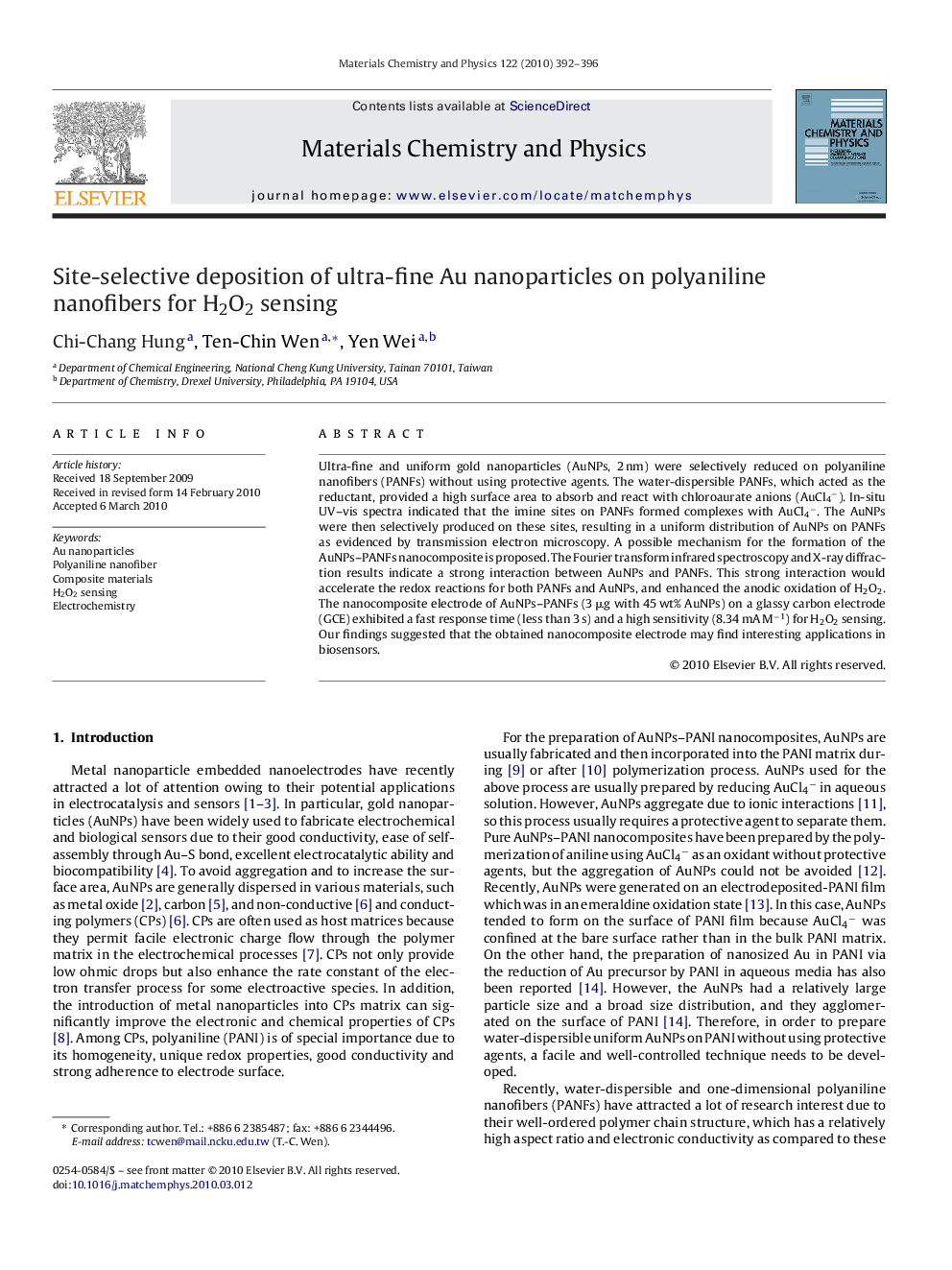| Article ID | Journal | Published Year | Pages | File Type |
|---|---|---|---|---|
| 1525274 | Materials Chemistry and Physics | 2010 | 5 Pages |
Ultra-fine and uniform gold nanoparticles (AuNPs, 2 nm) were selectively reduced on polyaniline nanofibers (PANFs) without using protective agents. The water-dispersible PANFs, which acted as the reductant, provided a high surface area to absorb and react with chloroaurate anions (AuCl4−). In-situ UV–vis spectra indicated that the imine sites on PANFs formed complexes with AuCl4−. The AuNPs were then selectively produced on these sites, resulting in a uniform distribution of AuNPs on PANFs as evidenced by transmission electron microscopy. A possible mechanism for the formation of the AuNPs–PANFs nanocomposite is proposed. The Fourier transform infrared spectroscopy and X-ray diffraction results indicate a strong interaction between AuNPs and PANFs. This strong interaction would accelerate the redox reactions for both PANFs and AuNPs, and enhanced the anodic oxidation of H2O2. The nanocomposite electrode of AuNPs–PANFs (3 μg with 45 wt% AuNPs) on a glassy carbon electrode (GCE) exhibited a fast response time (less than 3 s) and a high sensitivity (8.34 mA M−1) for H2O2 sensing. Our findings suggested that the obtained nanocomposite electrode may find interesting applications in biosensors.
